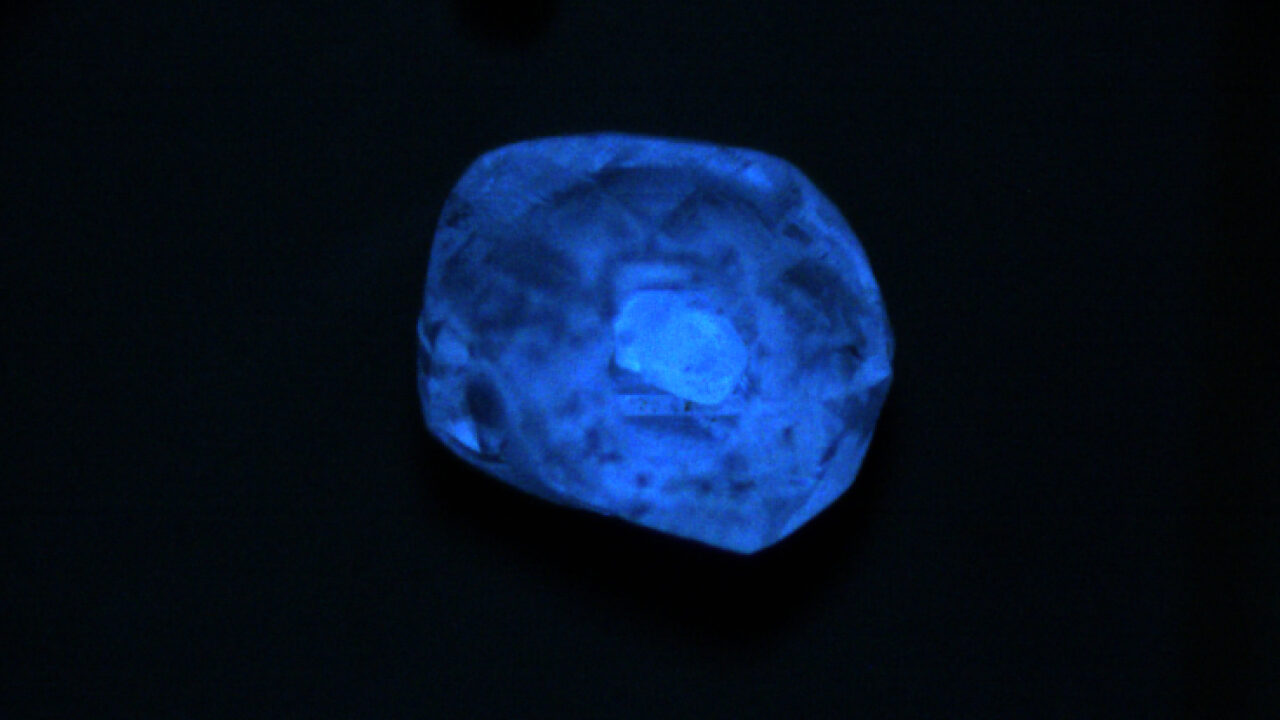Picture a diamond that has just formed deep in the earth, en route to the surface in fluid-rich pipes. So many factors go into its creation, including specific pressure, the perfect temperature, and certain trace elements. Now imagine a disruption occurs in this complicated process, and then a recovery that gets the process back on track.
That’s one way to create a diamond-within-a-diamond — like the 0.33-carat rough specimen that De Beers has dubbed the Beating Heart.
Inside job
The D-color, type IaAB stone was discovered last year at one of De Beers’ mines in either Africa or Canada. It appeared in an allocation for sightholder VD Global in October, according to Samantha Sibley, technical educator at the miner’s Ignite innovation arm. The next month, it was submitted for analysis to the De Beers Institute of Diamonds facility in Maidenhead, England, which verified the stone as natural.
As one might imagine, examining the intricacies of a diamond-within-a-diamond on such a small scale is something of a challenge.
However, the scientists at De Beers succeeded with techniques such as optical and scanning electron microscopy (SEM), Fourier-transform infrared (FTIR) spectroscopy, and fluorescence and phosphorescence imaging, Sibley relates. They also consulted with one of De Beers’ senior geologists in South Africa to gain a better understanding of how such an uncharacteristic formation occurred. The stone “initially looked like a twin, and upon closer inspection, we found out it was indeed a macle,” Sibley says, using the term for a twinned crystal.
The De Beers researchers identified three layers making up the diamond, she continues. “The initial growth, the core, was good-quality diamond followed by rapid, fibrous growth. This fibrous growth is [mostly] poor-quality, containing many fluid inclusions. Subsequent to the poor-quality growth came more gem-quality [material], the outer part of the diamond.”
However, because of an opening in the outer layer, “mantle fluids entered the diamond and etched away this fibrous growth, leaving the tiny diamond [core],” she explains. “The opening is not big enough for the tiny diamond to pop out, so it remains enclosed in the larger crystal, free to move.”
The fact that the gem-quality portion…has remained proves that [this stone] really is a tough cookie.
Setting itself apart
The Beating Heart’s growth process was different from that of the Matryoshka diamond that Alrosa found in Siberia back in 2019. Named for the famous Russian nesting dolls, that stone resulted from one diamond growing inside another, according to Alrosa’s scientists.
The gem-quality Beating Heart is among the rarest of rare in the diamond space, and given its tiny size, there are no plans to cut and polish it. It has, however, been registered on De Beers’ Tracr blockchain platform. It wouldn’t be surprising if it appeared in a museum someday.
“The fact that the gem-quality portion of the diamond has remained proves that the Beating Heart diamond really is a tough cookie [able] to thrive in these conditions,” says Sibley.
This article is from the March-April 2023 issue of Rapaport Magazine. View other articles here.
Image: Beers Group’s SYNTHdetect machine shows the Beating Heart diamond-within-a-diamond. (De Beers Group)



